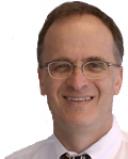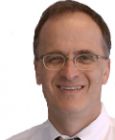Psychedelic-Assisted Therapy
Key Questions for the Psychedelic Renaissance
Expectations are through the roof. What is the evidence we need?
Posted June 23, 2022 Reviewed by Vanessa Lancaster
Key points
- Psychedelics are undergoing an unprecedented renaissance as psychiatric treatments.
- Data for their benefit, however intriguing, remain limited.
- Rigorous and clinically relevant research is urgently needed.
Every week seems to bring news about the psychedelic renaissance.
Recent papers in the New England Journal of Medicine and JAMA Psychiatry report that psilocybin benefits major depression. Laws in Oregon and elsewhere are changing to decriminalize psychedelic use. The FDA has fast-tracked the development of psilocybin for the treatment of depression and MDMA for posttraumatic stress disorder (PTSD). We are in a renaissance of psychedelic use and research.
In 2019 our Depression Evaluation Service at Columbia Psychiatry and the New York State Psychiatric Institute became a site for a Phase 2B study of psilocybin in treatment-resistant depression. As a researcher doing studies of psilocybin, it is wonderful to be part of this renaissance and, quite worrisome to see often-unrealistic expectations generated by such breathless news.
There are three key questions about psychedelic compounds as possible treatments for psychiatric disorders:
- Do they work?
- How do they work?
- Which drug works best for which conditions, for which patient?
1. Do they work?
Whether based on personal experience or media reports, many people will say, “Yes of course they do!” But if you look at the scientific literature, as my colleague David Bender, and I did in a 2022 review published in the journal Psychopharmacology, recent psychedelic clinical trials are small, and have many flaws. There are few high-quality double-blind placebo-controlled clinical trials, the gold standard for determining drug ‘efficacy.’
As of July 2021, the cutoff for our review, there were only 14 modern published studies of classical psychedelics (LSD, psilocybin, ayahuasca) enrolling a total of 315 patients conducted worldwide. Of these, only eight studies, enrolling 226 subjects, were double-blind. That is a tiny number of subjects. [In contrast, decades ago, during the first wave of psychedelic studies in the U.S., hundreds of studies were conducted, enrolling thousands of participants. Unfortunately, the quality of those early studies doesn't meet current standards for measuring the benefits and risks of such drugs.]
To really show that psilocybin alleviates depression, or that LSD is effective in OCD, we need more, and much larger, new clinical trials, meeting rigorous scientific FDA standards to test benefits and side effects.
And psychedelic studies are very difficult to do. For one, psychedelic treatments are very labor-intensive. They are combined treatments of medication and psychotherapy and require many hours of preparation and therapist time. A single psychedelic treatment requires two therapists to spend an eight-hour day with the patient, in addition to perhaps a dozen hours prior to and following the dosing session, a total of perhaps 25 to 30 hours of costly professional time per dosing.
Furthermore, it is difficult to do placebo-controlled psychedelic studies. Regardless of which drug is used as a placebo comparison—sugar pill, niacin, amphetamines, or a very low dose of a psychedelic drug (1 mg instead of 25 mg of psilocybin, as done in the recent Compass Pathways study)—patients, therapists, and research staff can almost always guess which treatment is being received.
It's pretty obvious whether a study participant is having a "real trip." And as a result, it is fiendishly difficult to separate "true" medication effects from placebo or other effects.
2. How do they work?
Assuming that these drugs do work, the question naturally arises of what is their "mechanism of action."
Classic psychedelic drugs—LSD, psilocybin, 5MEO-DMT, and ayahuasca—act on the serotonin system: they stimulate 5HT2A receptors, which are highly concentrated in the brain areas related to thinking, working memory, and attention.
While psychedelic effects such as visions and distorted perceptions generally fade within several hours, psychological effects (and apparently brain network effects) often persist long afterward.
But why?
Neuroimaging expert Robin Carhart Harris believes psychedelics increase neuroplasticity—and introduce entropy into overly rigid brain circuits. People with depression seem to have overactive, reverberating brain circuits and spend much time ruminating, preoccupied with negative thoughts and feelings. The default mode network (DMN), a network of brain centers most active during passive rest and mind-wandering, appears to be overly active and overly connected in people with major depression and other psychiatric disorders. People with depression may, in a sense, be unable to stop mind-wandering.
Do psychedelics reset these dysfunctional brain circuits—and if so, how? It is fascinating to consider that a single (or two) dose of a powerful drug might have profound and lasting effects on such dysfunctional circuits.
But how does this occur? What sort of changes occurs in brain cells or between them, in the vast networks of billions of cells that organize into hubs and nodes, that permit such changes to occur and then lock them in, so the brain doesn't quickly return to its disordered state?
On the other hand, it is possible that the brain circuit effects are not the specific active ingredient of psychedelic experiences. Maybe it is the powerful spiritual experiences that people often describe during psychedelic experiences that lead to such changes, such cures.
People taking psychedelics often report feelings of connection and enhanced empathy toward other people, a sense of oneness with nature, and so on. Perhaps such mystical-type experiences, whether induced by a chemical or dancing, chanting and prayer, prolonged sleeplessness or deep 'holotropic' breathing, etc., are the engine of transformation.
Furthermore, the therapeutic benefits of psychedelics may be placebo effects. Patients come into psychedelic treatments with vast expectations. They've read Michael Pollan, watched PBS, or read stories in the Times, all of which prime them for transformation.
Could psychedelics, which induce powerful sensory and emotional experiences, actually be merely hyper-charged placebos? I'f you undergo the powerful experience that you have been told will "cure you, maybe that activates our innate physical and mental placebo healing mechanisms.
It is fair to say that we are only starting to answer these complex, profound, and vexing questions.
3. Which drug is best for which condition?
Despite decades of wisdom from psychedelic users and advocates, we have precious little scientific guidance to lead us toward the best match between psychedelic compounds and psychic disorders.
Here are a few key–almost totally unanswered–questions which fascinate me (and my colleagues) as clinical researchers:
- What dose is most effective—how many milligrams of psilocybin or LSD will lead to the best outcome for which disorder?
- How many doses are needed to get the best initial effect?
- Which psychedelic is best for which disorder—depression, obsessive compulsive disorder, anorexia nervosa, PTSD, addiction, or end-of-life existential anxiety?
- How can we best sustain remission to keep people well?
The choice of medicines has been based on decades of community experience, on strongly believed impressions from expert underground users, shamans, and prayer leaders in indigenous cultures, but little comparative data.
Is MDMA truly better for PTSD than psilocybin or LSD? While MDMA is late stages of development for PTSD and may receive FDA approval in the next year, we don't know if it is the best psychedelic for that disorder.
Similar to psilocybin for major depression, is it better than other drugs? Also, many early studies have been done with two psilocybin trips, but current studies are being done with only one trip. The current studies are a major step forward from previous work but are only the beginning.
Additional studies are needed to sort out these and other issues.
It is also worth noting that we don’t know much about side effects and serious adverse events (such as suicidality) in the psychedelic treatment of people with psychiatric diagnoses. Data from the Compass Pathways treatment-resistant depression study have been presented at conferences but are not yet published. They indicate that psilocybin is generally safe, but increased suicidality may be a risk in some patients, who may need close monitoring.
Another key point: whatever is found about risks and benefits from current psychedelic studies, there will be a huge step from these findings to the real world. Clinical trials are highly selective, and enroll patients who have been extensively screened and closely followed; they don't and can't include the wide range of complex presentations we see in the real world.
Once these drugs are approved by the FDA (as seems likely), we will need additional rigorous research on the psychedelic treatment of people with depression and other coexisting conditions like medical illnesses, substance use disorders, etc.
Interestingly, Oregon has approved a program to provide psilocybin treatment starting in 2023 outside the conventional health care system. Hopefully, there will be a systematic collection of data about risks and benefits, side effects, toxicity, suicidality, and positive outcomes, for what will be an unprecedented and daring public health experiment.
An Amazing Period of Discovery
Today, clinical trialists and other researchers are beginning an amazing period of discovery during this second wave of psychedelic research. We desperately need top-quality studies following the FDA framework required for drug approval.
But that's only part of it. We also need profound scientific investigations—in cell cultures, organoids, human brain imaging labs, and in animal models—to truly understand and optimize the use of such drugs. And we need to be cautious--or more precisely, cautiously optimistic--before jumping wholeheartedly on the psychedelic bandwagon.
Ironically, this new research wave is largely led by foundations and small startup pharmaceutical companies. The National Institutes of Mental Health (NIMH) have only recently begun to fund studies of psychedelic compounds after such work was largely shut down in the 1970s. So a final point would be that it is time for the NIMH to provide adequate funding for such studies.
* * *
References
Bender D, Hellerstein DJ. Assessing the risk–benefit profile of classical psychedelics: a clinical review of second-wave psychedelic research. Psychopharmacology. 2022 Jan 13:1-26.
Carhart-Harris RL, Roseman L, Bolstridge M, Demetriou L, Pannekoek JN, Wall MB, Tanner M, Kaelen M, McGonigle J, Murphy K, Leech R. Psilocybin for treatment-resistant depression: fMRI-measured brain mechanisms. Scientific reports. 2017 Oct 13;7(1):1-1.
Carhart-Harris R, Giribaldi B, Watts R, Baker-Jones M, Murphy-Beiner A, Murphy R, Martell J, Blemings A, Erritzoe D, Nutt DJ. Trial of psilocybin versus escitalopram for depression. New England Journal of Medicine. 2021 Apr 15;384(15):1402-11.
Davis AK, Barrett FS, May DG, Cosimano MP, Sepeda ND, Johnson MW, Finan PH, Griffiths RR. Effects of psilocybin-assisted therapy on major depressive disorder: a randomized clinical trial. JAMA psychiatry. 2021 May 1;78(5):481-9.
Pollan M. How to change your mind: What the new science of psychedelics teaches us about consciousness, dying, addiction, depression, and transcendence. Penguin; 2018 May 15.




